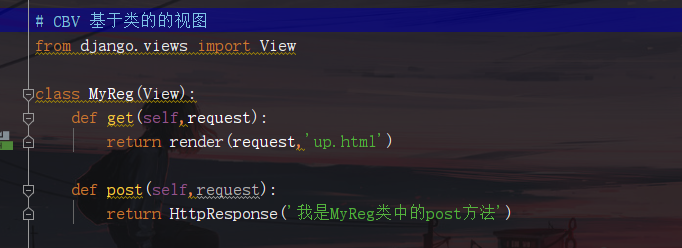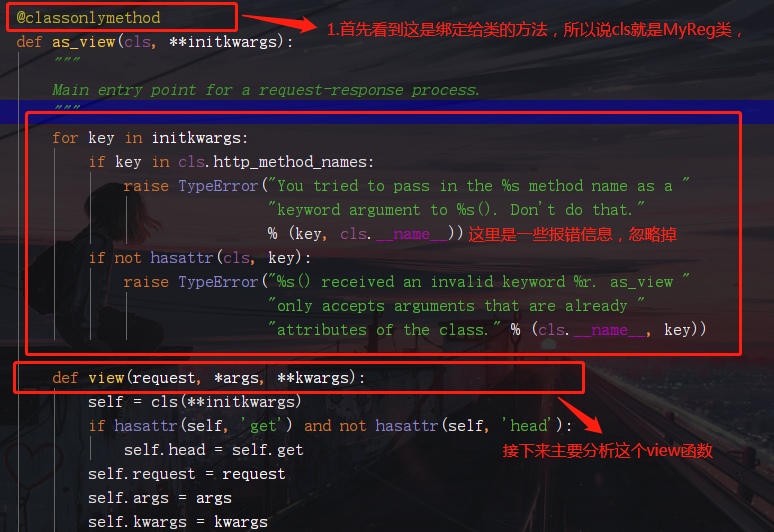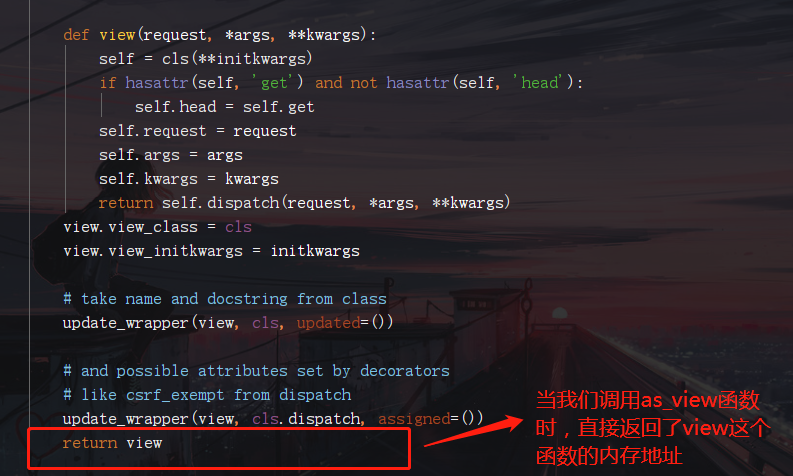Django之CBV檢視原始碼分析(工作原理)
阿新 • • 發佈:2019-10-28
1.首先我們先在urls.py定義CBV的路由匹配。

FBV的路由匹配:

2.然後,在views.py建立一名為MyReg的類:
注意:該類必須繼續View類,且方法名必須與請求方式相同(後面會詳解)

3.回到第一步的路由匹配可以看到MyReg.as_view(),直接呼叫了as_view函式。那麼現在進去as_view函式看看裡面運行了什麼?


4.由上面的分析可以知道執行as_view函式時,返回該函式下巢狀的一個叫view函式的記憶體地址,這樣,urls.py裡的url(r'^my_reg/', views.MyReg.as_view())就相當於url(r'^my_reg/', views.view)
5.假設url匹配成功,執行view函式:

首先view函式完成了MyReg類的初始化
最後view函式 先呼叫dispatch函式, 然後返回dispatch函式執行後返回值,
6.現在進入dispatch函式看看它返回了什麼資料
dispatch函式為CBV最精髓的部分

分析:
request.method.lower()為請求方式的小寫
self.http_method_names點進去為一個列表,該列表是所有八個請求方式的小寫
self.http_method_not_allowed返回一個報錯資訊為405的函式

getattr是反射,通過字串獲取方法的記憶體地址。拿到記憶體地址可以直接加()呼叫
最後總分析 dispatch函式
def dispatch(self, request, *args, **kwargs):
# Try to dispatch to the right method; if a method doesn't exist,
# defer to the error handler. Also defer to the error handler if the
# request method isn't on the approved list.
# 判斷使用者傳送的請求方式是否在http_method_names列表裡面
if request.method.lower() in self.http_method_names:
# 通過反射判斷MyReg類是否有跟請求方式同名的方法,若有,返回該方法的記憶體地址,沒有返回報錯405
handler = getattr(self, request.method.lower(), self.http_method_not_allowed)
else:
# 如果不在就返回一個報錯405的函式
handler = self.http_method_not_allowed
# 最後直接執行上面返回的函式
return handler(request, *args, **kwargs)
